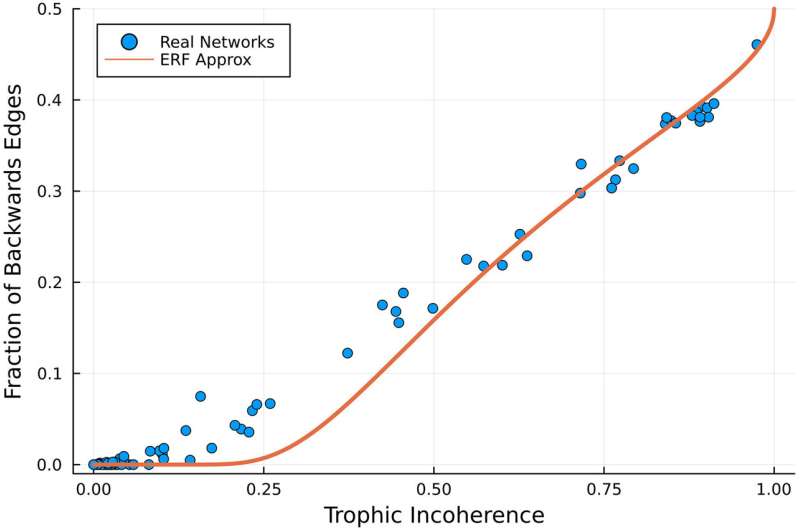This article has been reviewed according to Science X's editorial process and policies. Editors have highlighted the following attributes while ensuring the content's credibility:
fact-checked
peer-reviewed publication
trusted source
proofread
Harnessing incoherence to make sense of real-world networks

A new way of describing the connections in real-world systems such as food webs or social networks could lead to better methods for predicting and controlling them.
According to research published in the journal PNAS by mathematicians at the University of Birmingham, mapping the hierarchies and also the incoherence within a system will enable us to predict the system's strong and weak points.
Understanding how these connections work is crucial in many different ways—for example knowing how a disease will spread through a population, or whether every point in a communications network is "in the loop."
Real-world systems like these are referred to as "directed networks" by mathematicians because the connections usually flow in a specific direction. In food webs, for example, biomass will generally move upwards from plants, through herbivores and on towards apex predators. Networks are strongly connected if it's possible to move around the network without ignoring the directionality.
If a network is perfectly "coherent," with distinct trophic levels like plants, herbivores and carnivores, it can't be strongly connected. However, most real-world systems are neither perfectly coherent nor completely incoherent, but lie somewhere in between. In a food web, for instance, this might occur because of omnivorous animals that will eat both plants and other animals.
The researchers found that it was possible to use this trophic incoherence to estimate the point at which a network becomes strongly connected. They demonstrated that the method works for any type of network, including those of neurons, people, species, metabolites, genes and words, among others.
Niall Rodgers, lead author on the paper, said, "Our approach opens up news possibilities for understanding all sorts of different networks that are regularly encountered in society. A disease outbreak, for example, could be thought of as a network connected by the spread of bacteria through a population. Understanding where you are in that network and whether the connectivity is strong or weak could be crucial to making decisions about infection control."
Samuel Johnson, senior author on the paper, added: "This modeling approach could be used to disrupt networks as well, because the points at which connectivity becomes strong can be targeted. Neurologists, for example, might find new ways to treat epilepsy by pinpointing specific connections responsible for maintaining seizures."
More information: Niall Rodgers et al, Strong connectivity in real directed networks, Proceedings of the National Academy of Sciences (2023). DOI: 10.1073/pnas.2215752120
Journal information: Proceedings of the National Academy of Sciences
Provided by University of Birmingham





















